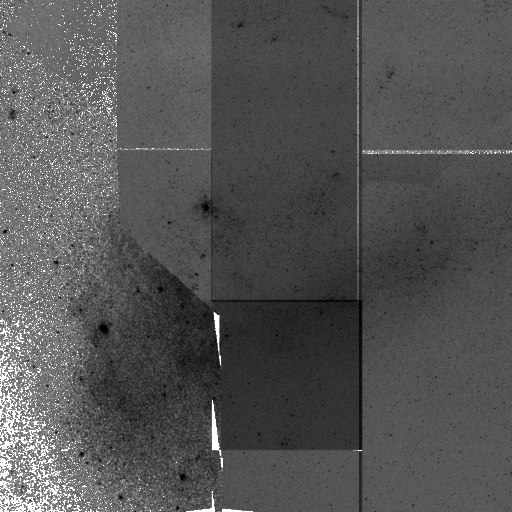
Credit: You-Hua Chu (Univ. of Illinois), Steve Snowden
(USRA/GSFC/LHEA)
A High Resolution X-ray Map of the LMC
The Large Magellanic Cloud (LMC) is a satellite galaxy orbiting the Milky
Way; at a distance of 171,000 lightyears it's the closest galaxy to us. The
LMC is rich in gas and dust and an active site of star formation. This
star formation activity leads to very violent high temperature emissions
which can be detected by X-ray observatories. X-ray emission provides a
peek into these violent processes, from the explosive stellar flares of
very young stars, to the energetic shocks produced by strong stellar winds
of very massive stars, to supernovae of older stars (and the interactions
of their ejecta with the rest of the galaxy). The image on the above left
is a false-color X-ray map of the LMC obtained by the High Resolution Imager (HRI) on the ROSAT X-ray satellite observatory during
the 1995-1998 interval. This map is the finest X-ray map of the LMC ever
obtained in terms of spatial resolution (a mapping of the LMC with the
ROSAT Position Sensitive Proportional Counter was also obtained; this PSPC
map has poorer spatial imaging, but better energy sensitivity). The bright
pointlike sources consist of normal stars and star clusters, X-ray bright
compact objects (like neutron stars and black holes), and at least one
known soft gamma ray repeater, SGR 0526-66. In addition, extended X-ray
emission powered by remnants of supernovae (including SN 1987A, the
brightest, nearest supernova in over 400 years) and the collision of
stellar winds with interstellar clouds in the LMC can also be seen. The
image on the right is a "negative" optical image of the HRI X-ray field,
stitched together from the Digitized Sky Survey made available by the Space Telescope Science Institute.
Last Week *
HEA Dictionary * Archive
* Search HEAPOW
* Education
Each week the HEASARC
brings you new, exciting and beautiful images from X-ray and Gamma ray
astronomy. Check back each week and be sure to check out the HEAPOW archive!
Page Author: Dr. Michael F.
Corcoran
Last modified May 26, 2001



